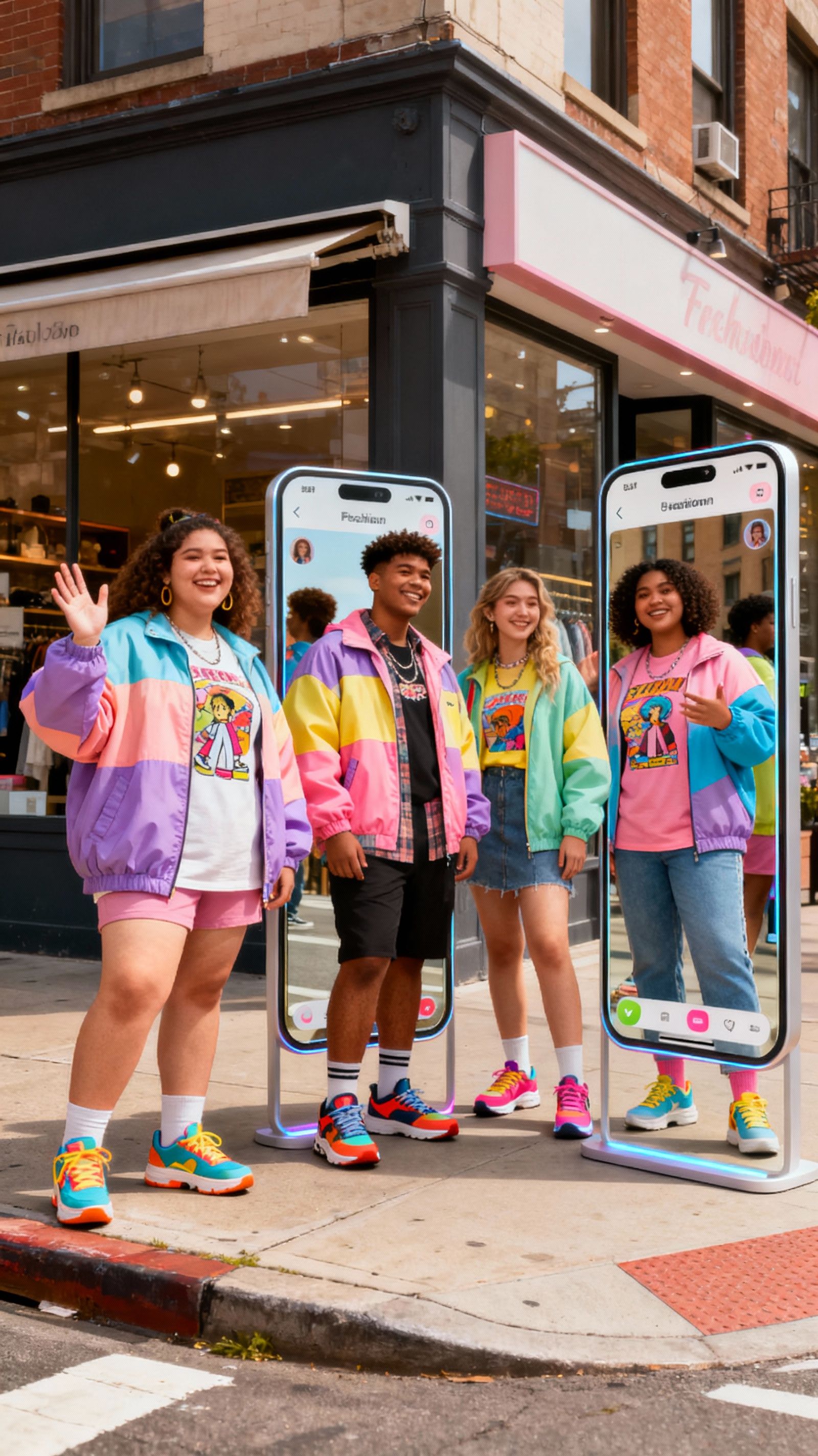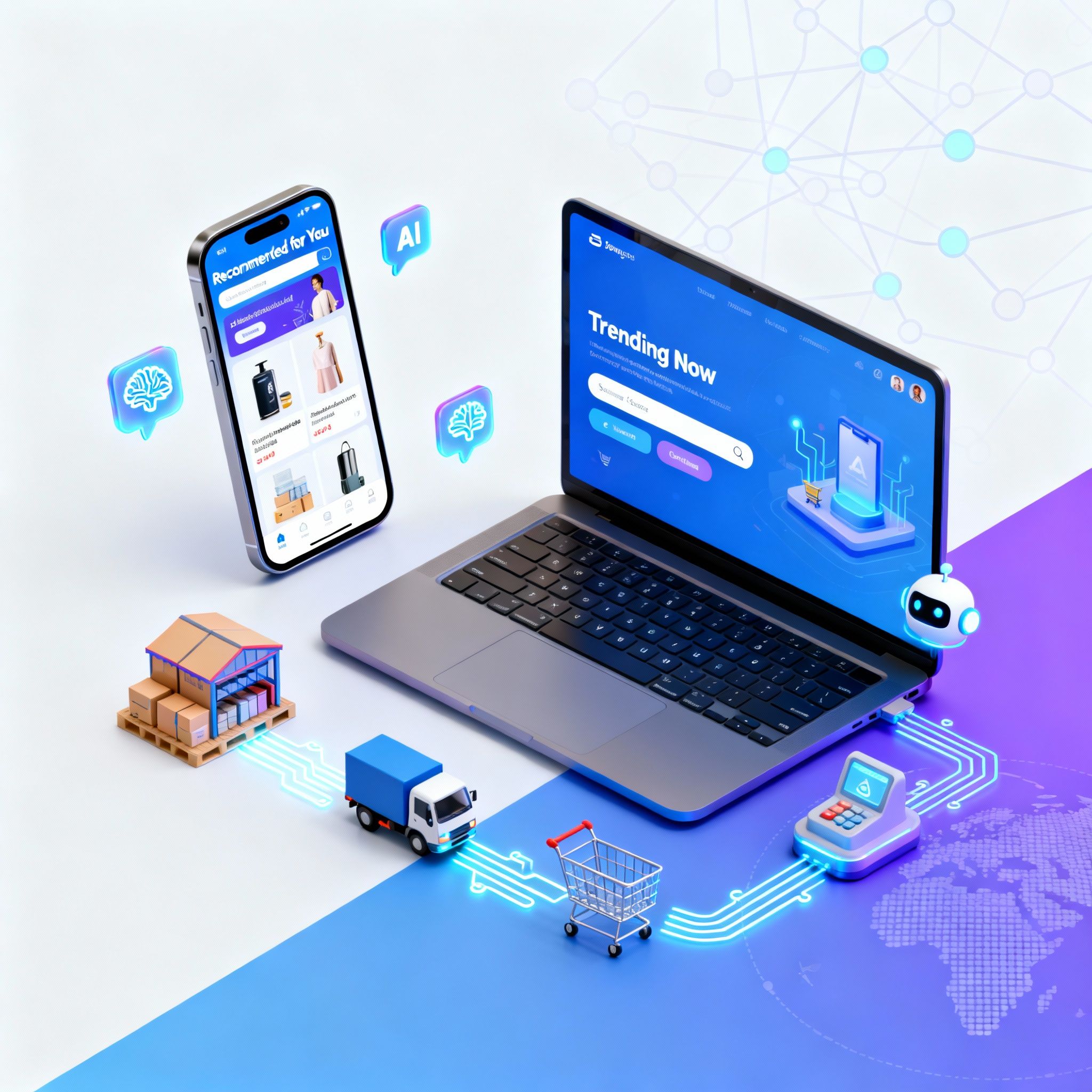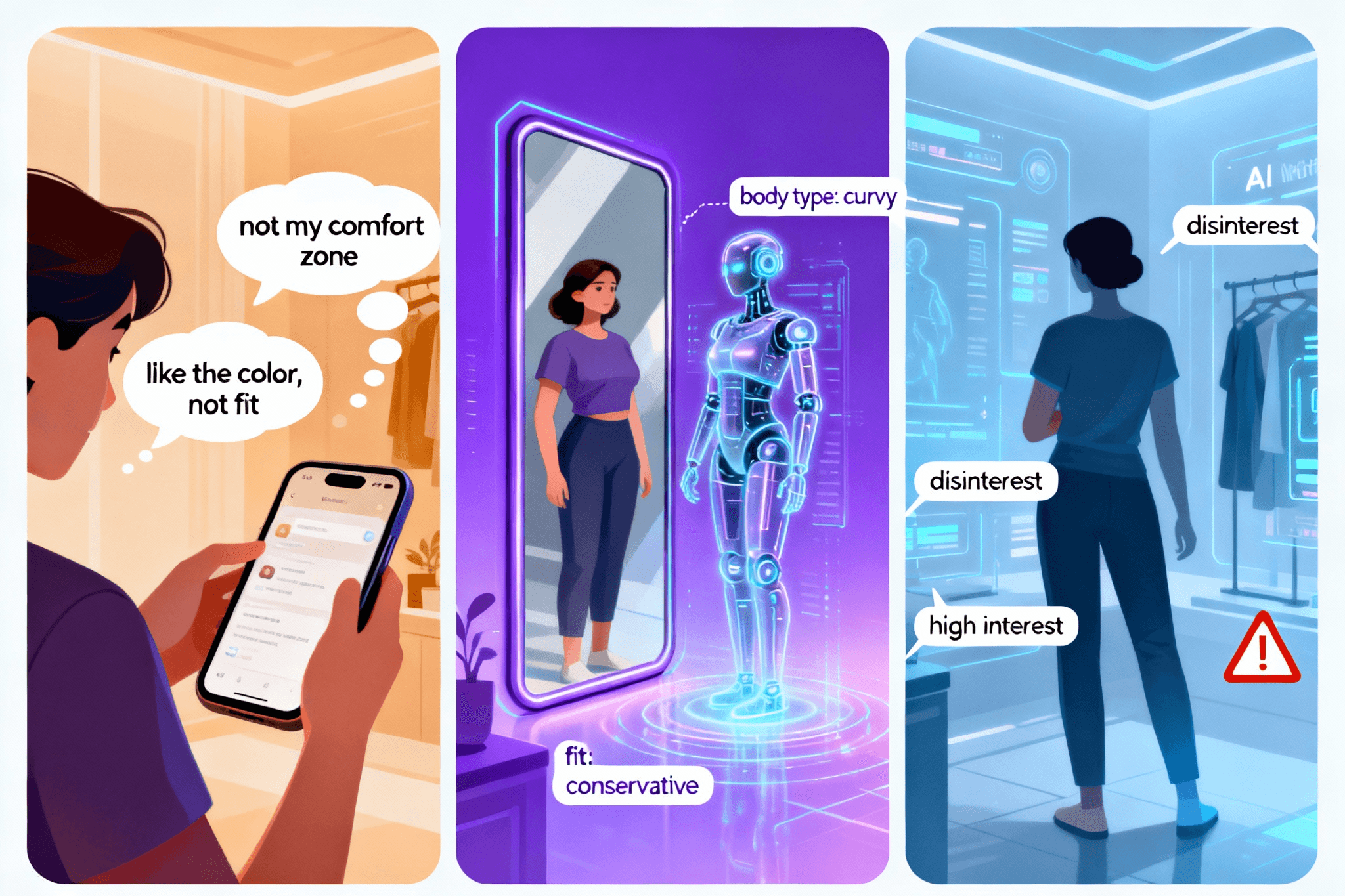AI in Online Shopping: Honors Every Unique Body Type
Mobile AI Shopping: The Psychology of Swipe-First Commerce
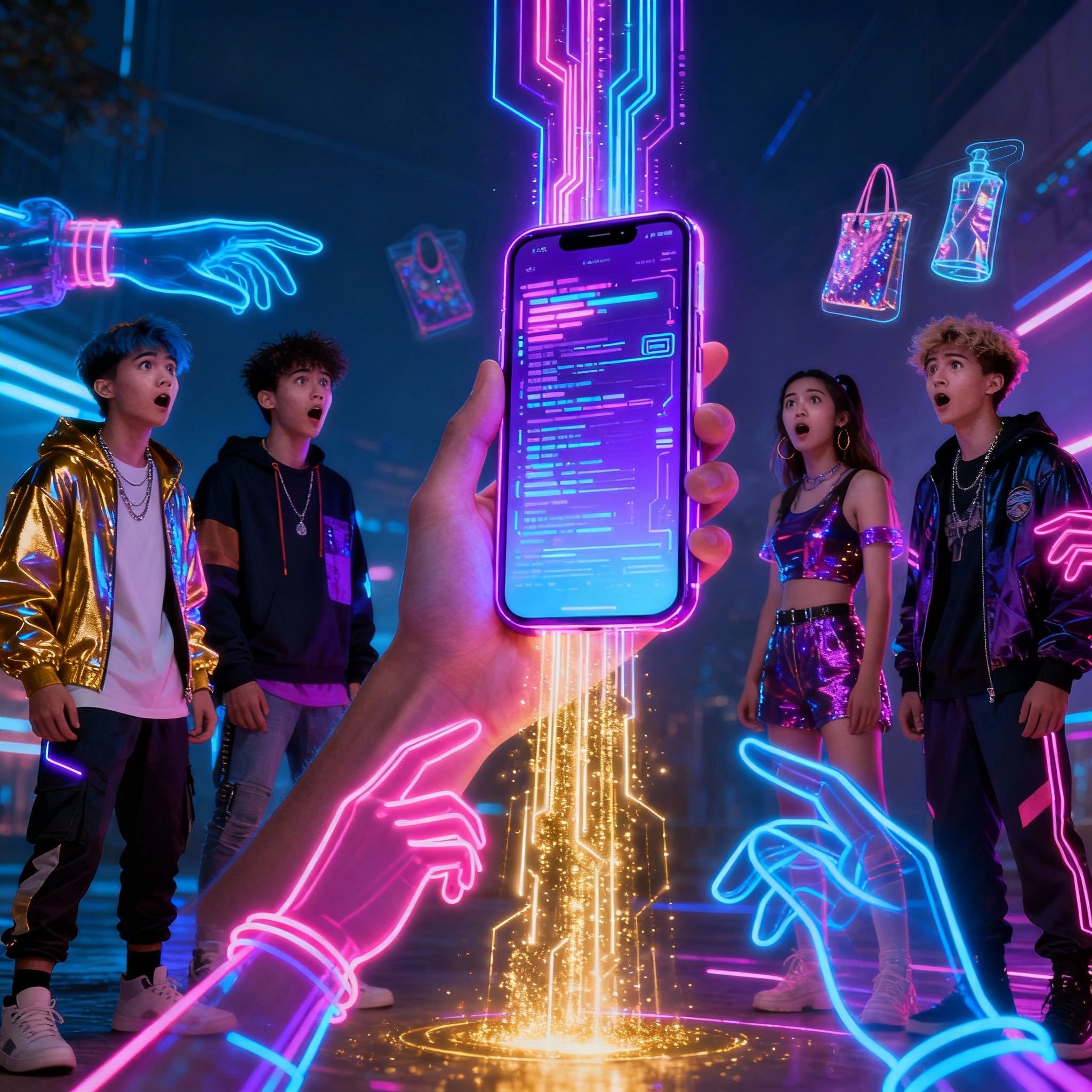

TL;DR
Mobile AI shopping isn’t just ecommerce on a smaller screen—it’s commerce redesigned around human gestures. By decoding swipes, scrolls, and sequence flows, AI transforms micro-behaviors into predictive insights. For Gen Z, fashion lovers, and mobile-first users, this is more than shopping—it’s entertainment, personalization, and speed.
Why Mobile AI Shopping Matters Now
Mobile shopping is no longer a convenience—it’s the default. According to OuterBox, over 70% of global e-commerce traffic comes from mobile devices. Gen Z, in particular, relies on mobile-first interactions for everything—from communication to fashion discovery.
But mobile shopping isn’t just “desktop on a smaller screen.” The real game-changer is mobile AI shopping, where artificial intelligence interprets gestures, swipes, and scroll patterns to craft personalized journeys. Unlike traditional ecommerce, which relies on clicks and search bars, mobile-first AI shopping thrives on speed, sequence, and micro-behavioral cues.
Why Swipes Matter More Than Clicks

Desktop commerce was click-driven. Mobile commerce is swipe-driven. The difference is more than design—it’s cultural. Apps like Tinder and TikTok have rewired expectations, making swiping a natural language of decision-making.
In mobile AI shopping, every swipe is a signal:
- Swipe left = rejection.
- Swipe right = interest.
- Scroll slowdown = hesitation.
The psychology of swiping means AI can interpret confidence levels, intent, and even mood in ways clicks never could. For retailers, this data is pure gold.
The Science of Micro-Behaviors
Micro-behaviors are subtle but powerful. Mobile AI shopping systems don’t just look at what users buy—they study how users behave before buying.
Micro-Behavior | What It Reveals | AI Personalization Outcome |
Fast swipe past product | Strong rejection | Removes similar items |
Long pause on item | High interest | Surfaces related products |
Zoom-in interaction | Texture/detail preference | Highlights fabric-rich options |
Repeated back-and-forth scrolling | Decision hesitation | Pushes reviews, social proof |
This commerce kinesics (body language of shopping) is what sets mobile AI shopping apart from traditional methods.
Swipe Speed as a Predictor of Purchase
Swipe speed may look trivial, but it’s predictive gold. Fast swipes indicate browsing, while slow swipes or pauses suggest intent.
According to Baymard Institute, improving mobile UX alone can boost conversion rates by up to 35%. Mobile AI shopping integrates this principle by predicting which gestures signal a high-likelihood purchase.
This allows platforms to nudge shoppers at the right moment—with a limited-time offer, a push notification, or a Virtual Try On.
Gen Z’s Psychology: Shopping as Entertainment
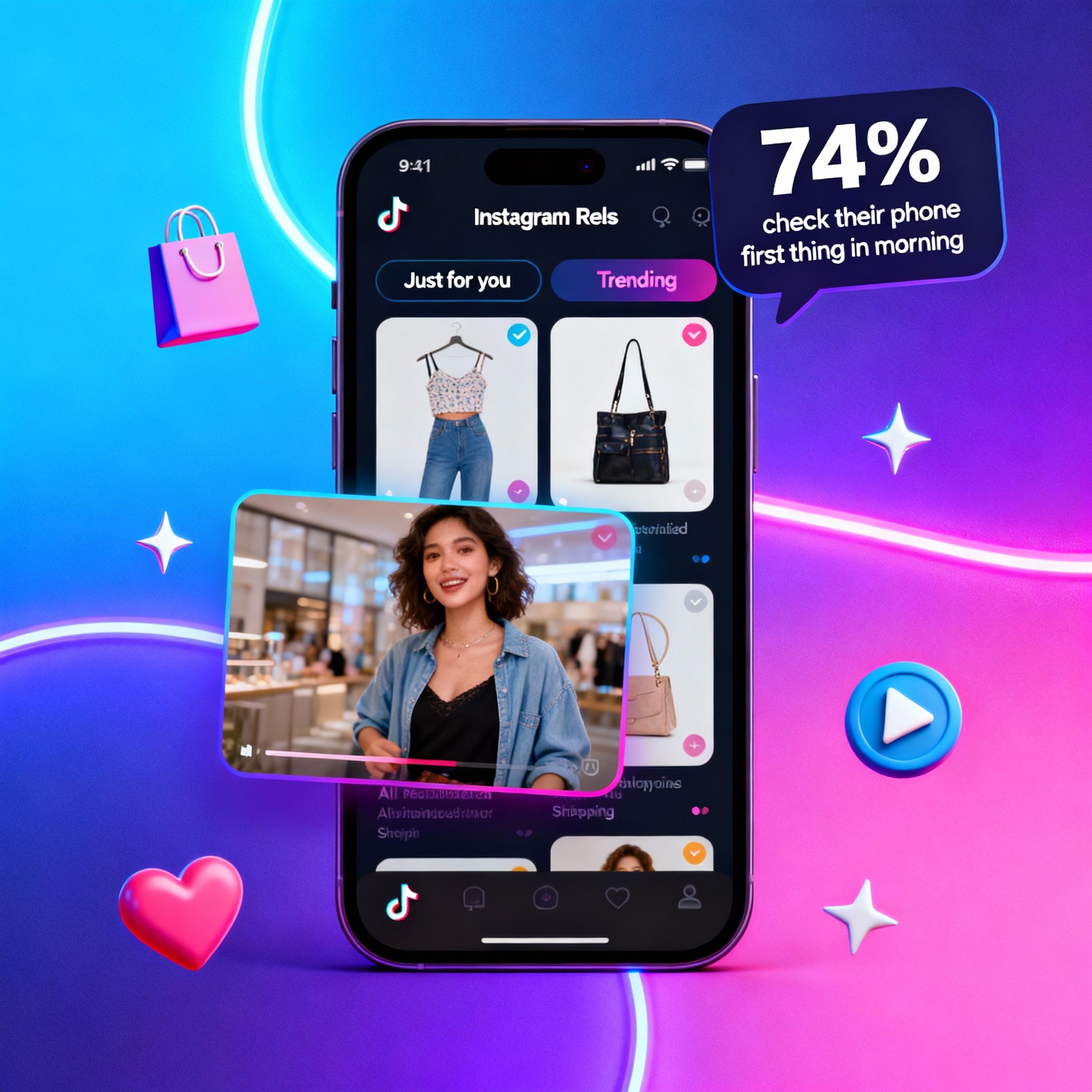
For Gen Z, shopping isn’t just about buying—it’s about scrolling, discovering, and enjoying. Mobile AI shopping taps into this psychology, turning commerce into scrolltainment.
- Quick, immersive feeds instead of static catalogs.
- Video-driven recommendations over text-heavy descriptions.
- AI-personalized “For You Page”-style shopping journeys.
According to Deloitte’s Consumer Trends Report 2024, 96% of adults now own a smartphone, with 74% checking their phones as soon as they wake up. The study highlights how ingrained mobile use is in daily life, making smartphones the preferred device for shopping, browsing, banking, and entertainment.
The Role of AI Automation in Mobile Shopping
While swipes define the front end, ai automation powers the invisible backend:
- Real-time inventory sync based on swipe demand.
- Dynamic pricing adjusted by product interest velocity.
- Automated push notifications triggered by sequence flow.
This synergy ensures that mobile AI shopping feels instant, fluid, and personalized—all while reducing operational friction for brands.
Fashion Focus: Glance AI and Virtual Try On
Fashion is where mobile AI shopping feels most natural. Visual products + swiping = discovery with zero friction.
Apps like Glance AI excel here by combining outfit curation with Virtual Try On. Instead of generic “you may also like” lists, Glance interprets swipe gestures and matches them with personalized try-ons.
Think of it this way: Glance turns your thumb’s micro-gestures into a stylist’s intuition.
This is where AI shopping experience transcends catalogs—it feels like a conversation between your gestures and the app.
Mobile AI Shopping Across Verticals
Although fashion leads the wave, other industries are catching on:
Vertical | Traditional Shopping | Mobile AI Shopping |
Fashion | Grid browsing | Swipe-based outfit curation + Virtual Try On |
Electronics | Feature comparisons | Gesture-based lifestyle matching (e.g., gaming vs work) |
Home Décor | Static categories | AR + sequence flow (“rug before sofa”) |
Grocery | Weekly lists | Swipe-speed replenishment + predictive restock |
This shows how AI shopping in USA is already evolving beyond one-size-fits-all ecommerce.
The TikTok-ization of Mobile Shopping
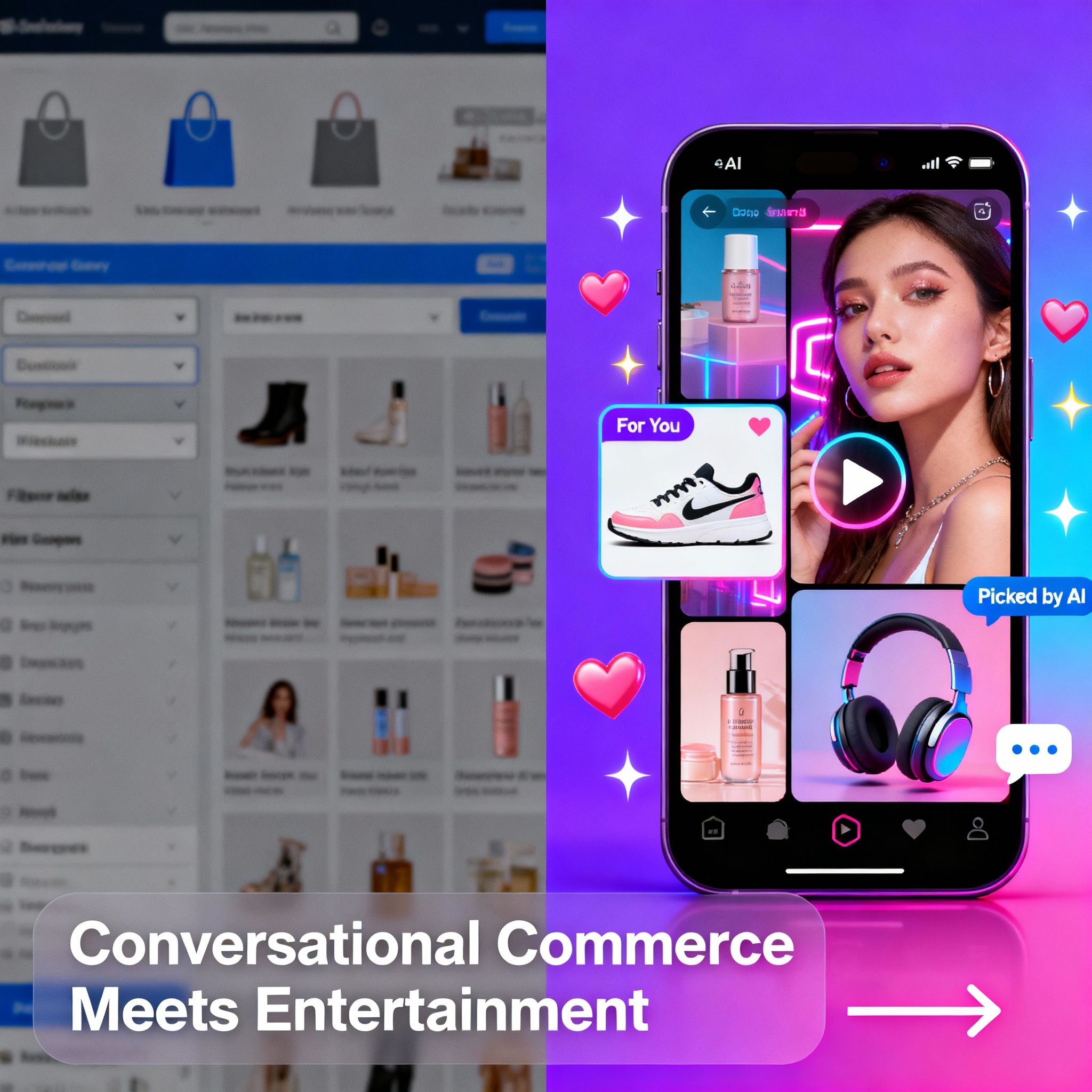
Traditional ecommerce is structured: categories → filters → results.
Mobile AI shopping is fluid: swipe → discover → personalize. It’s a For You Page for commerce.
- Short-form videos replace product photos.
- AI curates feeds based on micro-behaviors.
- Conversational commerce meets entertainment.
This cultural shift is why AI shopping vs traditional shopping is no longer a debate—it’s a generational divide.
Challenges and Ethical Questions
- Data privacy: Are gestures and micro-interactions more personal than cookies?
- Over-personalization: When does personalization cross into manipulation?
- Accessibility: Can mobile AI shopping work inclusively for older demographics?
Brands adopting mobile AI shopping must balance innovation with transparency.
The Future: Gesture Becomes the New Shopping Language
What’s next?
- Predictive eye-tracking → understanding intent before a swipe.
- Smart rings and AR glasses → gesture shopping beyond phones.
- For now, mobile AI shopping dominates as the bridge between human instinct and AI automation.
The shift is irreversible: mobile AI shopping isn’t just an ecommerce trend—it’s the new grammar of retail.
Conclusion
Mobile AI shopping redefines commerce around gestures, sequence, and micro-behaviors. For Gen Z and mobile-first shoppers, swiping is the new shopping language—and AI is fluent in it.
Brands that embrace AI shopping not only meet ecommerce trends like conversational commerce but also future-proof their customer journeys. With tools like Glance AI leading the way, the future of shopping is already in your thumb.
FAQs
Q1. What is mobile AI shopping?
Mobile AI shopping interprets gestures, swipes, and micro-behaviors to personalize ecommerce in real time.
Q2. How does mobile AI shopping improve ecommerce trends?
It aligns with conversational commerce, swipe-first UX, and personalization—three leading ecommerce trends.
Q3. What role does Virtual Try On play in mobile AI shopping?
It reduces returns, enhances confidence, and transforms browsing into immersive discovery.
Q4. Is ai automation part of mobile AI shopping?
Yes, ai automation runs the backend—from inventory to pricing—to keep the mobile experience seamless.
Q5. How is AI shopping different on mobile vs desktop?
Desktop is click-driven and static, while mobile AI shopping adapts dynamically to gestures and sequence flows.


